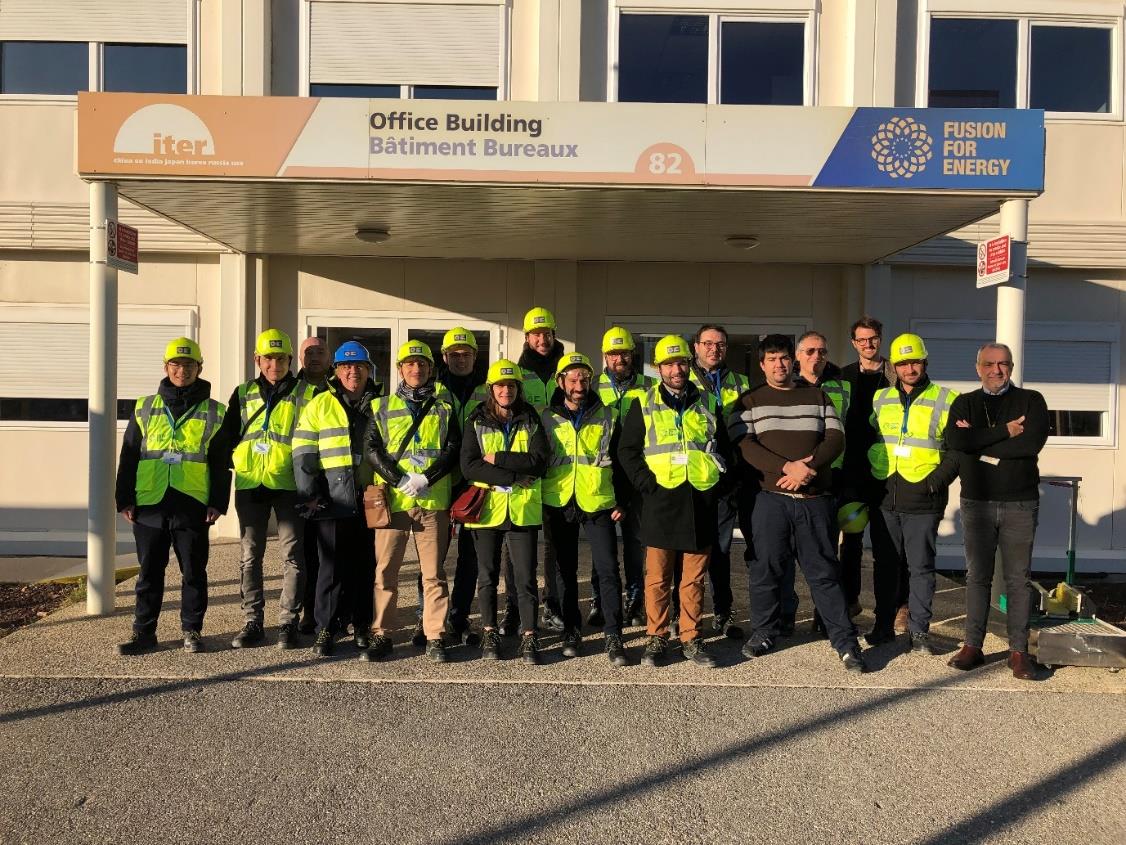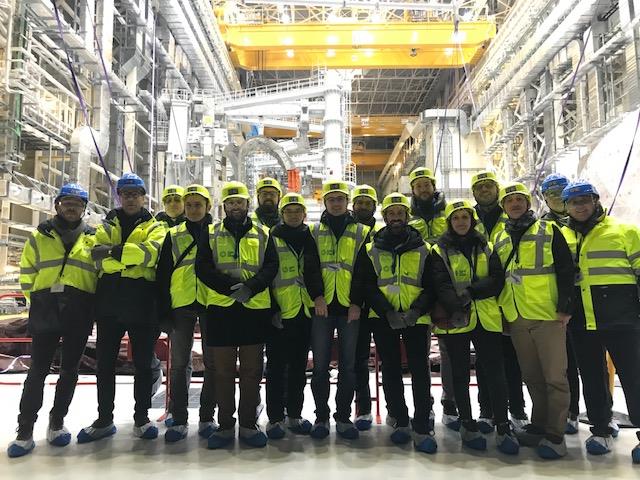Europe makes progress in the design of ITER Test Blanket Modules

Representatives from F4E and EUROfusion during the progress meeting at the ITER site, December 2023 ©EUROfusion
Manufacturing the ITER components has proven to be a powerful experience for industry and laboratories, because it has pushed their boundaries of know-how in order to meet the demanding specifications. The experiment, however, will also provide a one-of-a-kind environment to test key technologies that will be needed in future reactors. The Test Blanket Modules (TBMs) is one of them, aiming to regenerate enough tritium to keep reactions going in a steady and self-sufficient mode. Four TBMs concepts are being developed by four different ITER parties: a water-cooled lithium led by Europe, a water-cooled ceramic by Japan, a helium-cooled ceramic by China, and a helium-cooled ceramic by Europe and Korea.
F4E and EUROfusion count a long-lasting partnership in the design of the TBMs and the development of the DEMO Breeding Blanket system. The R&D activities jointly undertaken rely on the principle that Europe needs to capitalise on its expertise and make an efficient use of its resources. The best way to harvest this knowledge is through specific tasks offering the meaningful involvement of F4E and Europe’s fusion laboratories. It’s also a way of avoiding duplication of tasks. The priority is given to tasks that will deliver R&D results for the TBMs programme, which are executed by the European Fusion Laboratories (EFLs) in form of joint teams in various shared facilities in Europe. They are conducted in agreement with EUROfusion, and in line with F4E specifications. For instance, the development and qualification of functional materials, predictive tools, sensors, and welding techniques. Moreover, the testing of key technologies and the conduct of safety analyses are extremely valuable to comprehend the scale of engineering challenges lying ahead.

For the period of 2021-2025, 60 R&D tasks have been identified resulting into more than 300 deliverables. In 2021-2022, more than 150 of them were finalised, and an additional 50 were introduced last year. Towards the end of last year, a final progress meeting was hosted in F4E, bringing together more than 30 people to discuss the state of the project. DEMO designers, members from European Fusion Laboratories working on R&D projects, F4E’s TBM Programme members attended the meeting. The benefits of the ongoing collaboration were highlighted, and the need to work as “one joint team” was set as an objective. A closer partnership is certain to narrow any knowledge gaps and connect projects in a seamless manner such as the ITER TBMs and the development of the DEMO Breeding Blanket. The fusion community is extremely interested in both projects not only because of the new knowledge acquired, but also because they hold the key to the realisation of fuel-sufficient fusion reactors.